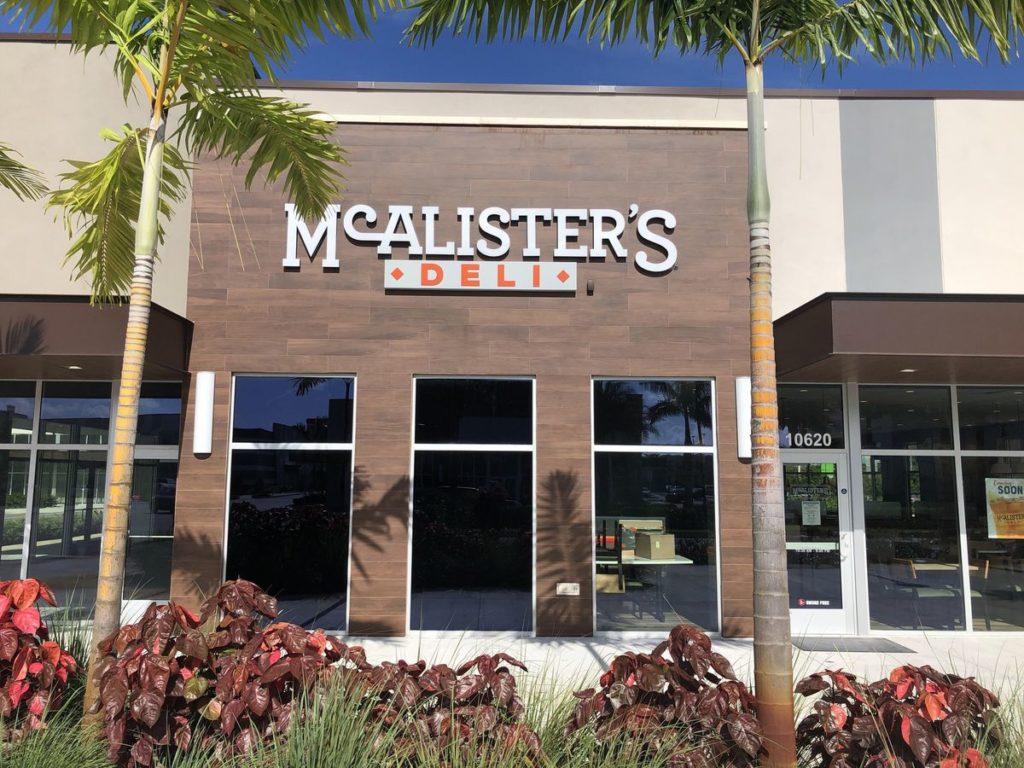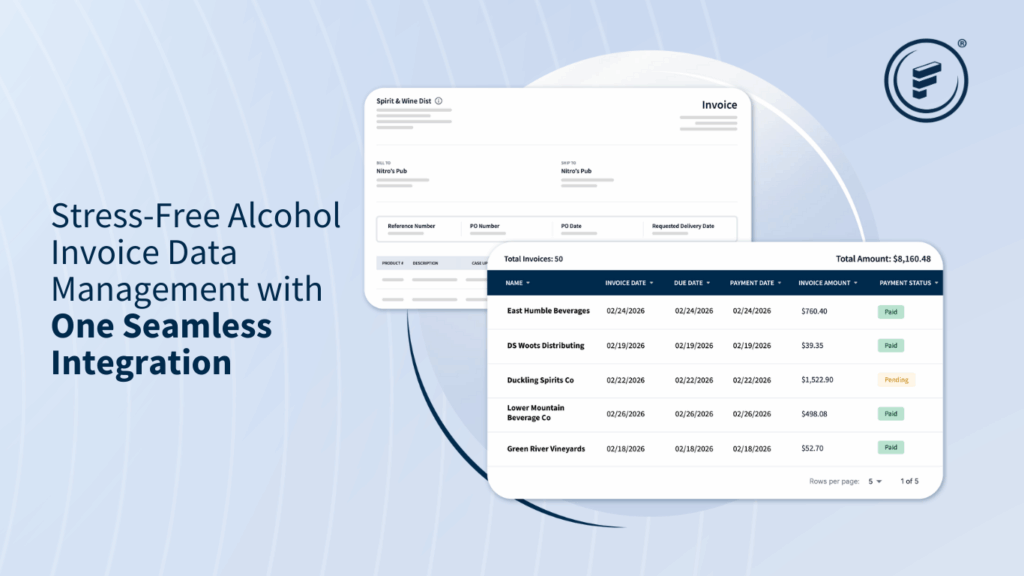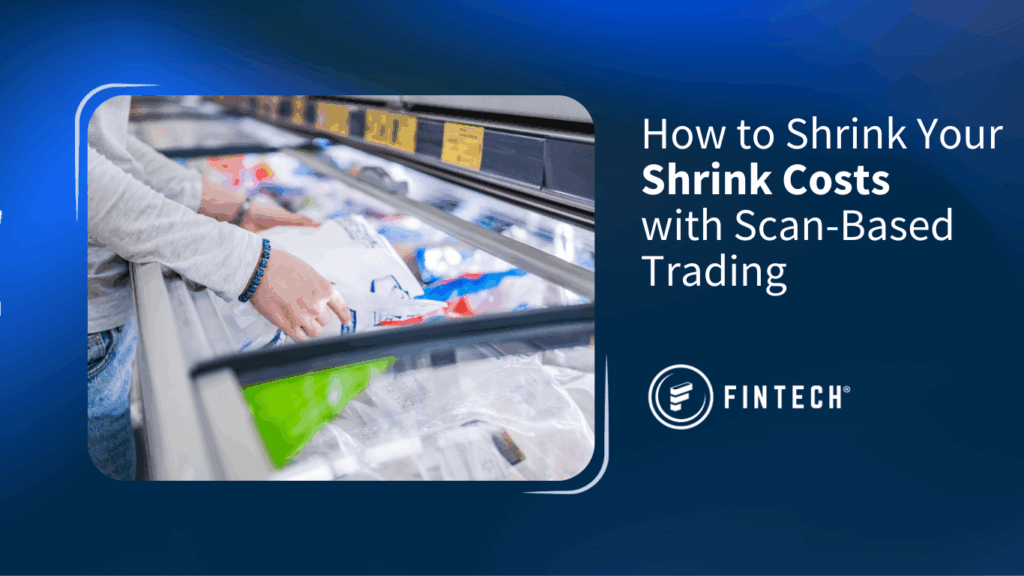As restaurant regulations shifted, McAlister’s Deli relied on innovative technology to communicate new safety procedures and solidify its commitment to customers.
This blog is part five in a five-part series around how Restaurateurs are finding their new normal and operating under COVID regulations.
McAlister’s Deli began in 1989 as a small yet charming neighborhood restaurant and has grown over the last three decades into one of the nation’s favorite eateries. With a foundation in quality meals and giant glasses of sweet tea, McAlister’s continues to serve families across the country and has become an integral member of the communities in which they operate. Today, their dedication, innovation, and communication has set them apart from others adjusting to new regulations and restrictions brought on by COVID-19. During our panel discussion with industry-leading restaurant brands, Michael Freeman, Vice President of Company Operations at McAlister’s Deli, shared some of the ways McAlister’s is forging forward with new opportunities.
What has the reopening process looked like for McAlister’s?
Michael: Thankfully, we were positioned really well before COVID hit (with our digital guest convenience features), and so we’ve been able to rebound and reopen our dining rooms quickly. Each location has stayed open for business throughout the pandemic, except for one non-traditional mall location, which briefly closed. At this point, we are fully open for dine-in, but we followed a process to get here. As states lifted regulations, we typically waited about a week before we officially reopened for dine-in to make sure our staff was thoroughly trained, and our customers knew exactly what to expect.
How did you communicate reopening procedures to your customers?
Michael: The power of social media is amazing! For McAlister’s, we utilized Facebook, Instagram, and direct email to our loyalty members. It’s really been the information highway that’s connected us to our guests and has allowed us to push information out as soon as possible. Before the onset of COVID, we launched a brand new app and loyalty program, so we had a really great direct line of communication with a large number of guests.
It’s more important than ever to stay on top of the rapidly changing rules and regulations. Has that been a challenge for you, and how have you tracked the changes that impact your business?
Michael: We have an outstanding, cross-functional team that monitors any regulatory updates. They communicate those changes to the Above Restaurant Leaders. They have done an exceptional job of supporting operations with safety guidelines and personal protective equipment, allowing location-level teams to get back to service quickly without impacting business continuity. The team send updates as soon as things change and so we’ve been able to pivot when necessary, which is essential at a time like this.
Has the shift to more to-go business changed anything for you, and did you make any menu changes to accommodate?
Michael: This is another area where I can say, thankfully, we were well prepared for the changes. The off-premise sales channel was already a primary part of our business, but we experienced a significant sales lift with the dining room closures and capacity restraints. As they say though, necessity is the mother of invention, so we took the sales mix shift as an opportunity to capitalize on new growth by finding new ways to pop-up and rollout curbside service or even drive-thru where it made sense. We have our own delivery capability within our newly-launched digital app, and we’re currently developing enhancements to the platform that we maybe wouldn’t have explored prior to the crisis.
Sales continue to rebound, and guests have made it clear that they now expect frictionless convenience, in new ways, when visiting our locations.
Guests’ dining behaviors have shifted from enjoying meals inside a restaurant to dining at home with the desire to still consume the same delicious meals. To meet this changing demand, McAlister’s added new offers around family meals which serve a family of four. These family meals can mixed-and-matched to include two adult entrees, two kid meals, one family-sized side, and a gallon of McAlister’s famous sweet tea. Guests can also order McAlister’s deli kits, which serves six to eight people and come with bread, choice of premium meat and cheese, plus a gallon of tea. Throughout this process, McAlister’s, like other restaurants in the industry, faced some supply outages but we were able to navigate these challenges.
Did you make any changes to how you physically present menus to your customers?
Michael: All of our locations have menu boards up behind the counter, and before COVID, we also had laminated menus at the front door. Now those laminated menus have been removed, and we’ve transitioned to one-time use paper options. In some locations, we removed the handheld menus entirely and are just directing guests to our website or mobile app. Again, we felt it was better to remove options than try to overcomplicate the solution.
How are you blocking off tables or accommodating for capacity restrictions?
Michael: We created an entire brand package for each location, including social distancing floor markers, table tents, PPE for workers, and signage – just to clearly over-communicate what we were doing. If we could physically remove tables, we did. We heavily prioritized leading with the well-being of our guests and team members and with convenience. We kept the information simple and made a conscious decision to keep everything branded and consistent across our locations. We felt that in addition to our food, we’re selling trust to our communities, so we want guests to see the professional, clear indicators and know that well-being of our guests and team members isn’t an afterthought. It’s a very self-guided experience that is easy for the customer to see and understand.
What are you doing from a staff-safety perspective, and how are you getting buy-in from your employees regarding PPE, social distancing procedures, and new safety practices?
Michael: Since we are a counter-service concept, we decided very early on to be one of the first adopters of masks and gloves for the entire brand. We understood that it was important optically for guests to see that we are taking necessary protective measures. In addition to the social-distancing brand packages for each location, the staff is required to wear masks and gloves, and we’re sanitizing frequently touched surfaces. In some locations, we’ve put up plastic shields at the counter. Additionally, we focused heavily on staff training before a location reopened for dine-in, and even created a 100+ page SOP for ongoing education and manager reference. We are also conducting employee screenings for every shift, taking temperatures and asking sick team members to stay home.
Have you made any changes to your payment processes because of COVID?
Michael: Again, this is a great example of how we took an opportunity to innovate and ran with it. We partnered with our call center vendor to develop a system where guests can call, place an order, and make payment over the phone, which wasn’t an option before. Online and app orders have also been modified to accept pre-payments, so guests picking up food to-go never have to make payment at the physical location. In the dining room, we’re using cash trays and wearing gloves if someone does pay with cash. We also leverage technology that allows guests the ability to insert their credit card without exchanging anything with the team member.
Lastly, what would be your best advice for anyone looking to navigate all these new regulations and be successful in moving forward?
Michael: I would say to not focus on the immediacy of negative events or fear of the unknown, but rather pay think strategically about the entire recovery and overall success plan. When the dining room closures started, we immediately took a holistic approach to recovery planning and outlined a strategy based on operational complexity, frictionless convenience to the guest, the well-being of our guests and team members, and trust. Every initiative was mapped out on that grid, and the ones that fell closer to the epicenter took first priority. We wanted to get back to business quickly, obviously, but we wanted our customers to feel comfortable coming back. Other advice would be to lean on technology and be proactive about what you’re doing, not just react for the sake of action. McAlister’s Deli moved quickly on new initiatives, like our mobile app, that provided a lot of convenience, flexibility, and education and rewards for our guests – and it’s paid off. Our customers never stopped engaging with us, and we’ve received a lot of great feedback about our service over the last few months.
Comments are related specifically to company-owned stores and not necessarily reflective of the franchise system.
Interested in hearing more about how McAlister’s Deli and other top restaurant brands are handling new regulations and finding success with reopening? Watch our full panel webinar, Restaurateurs Share Best Practices for Operating Under COVID Regulations, on-demand.






